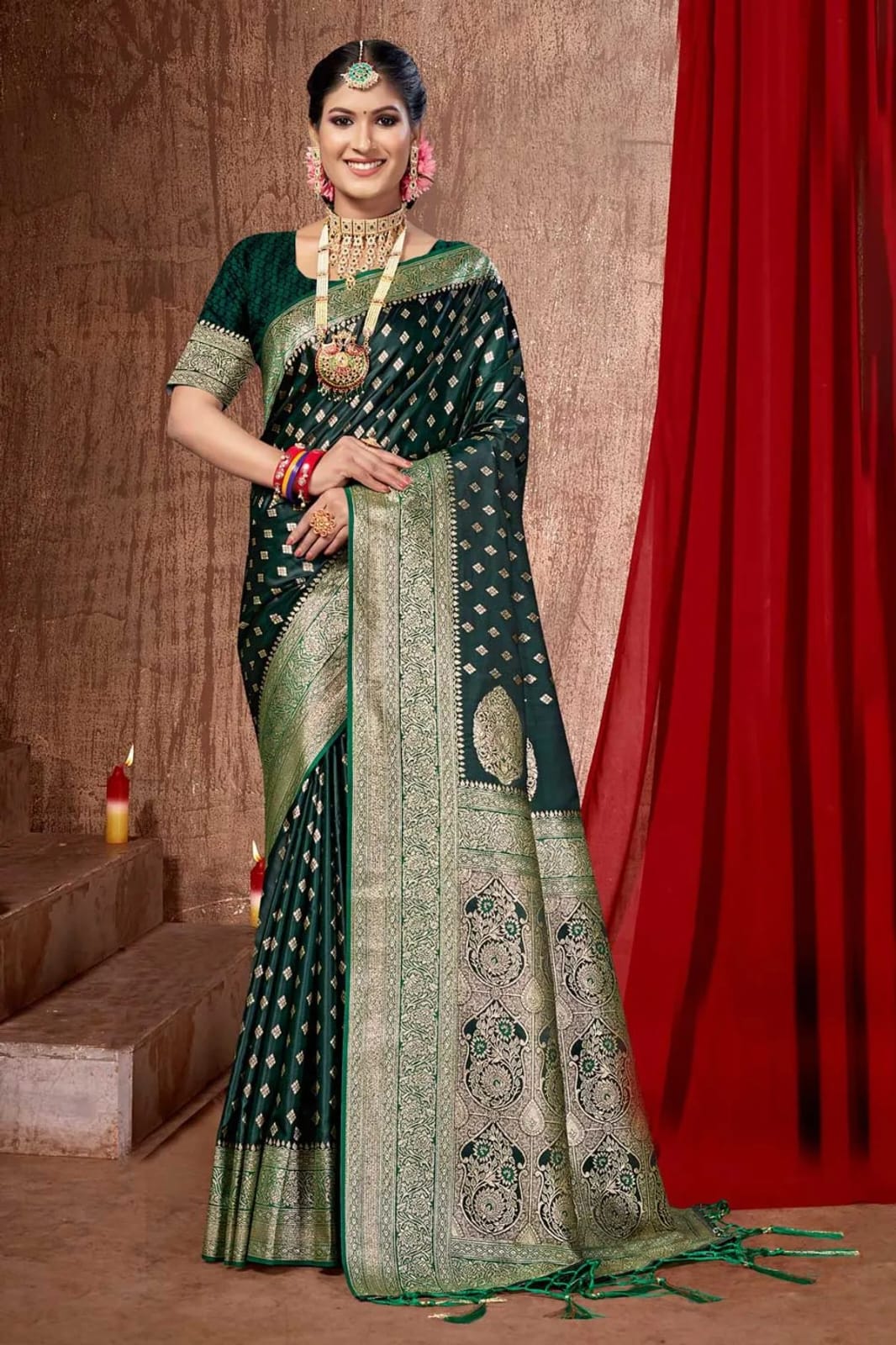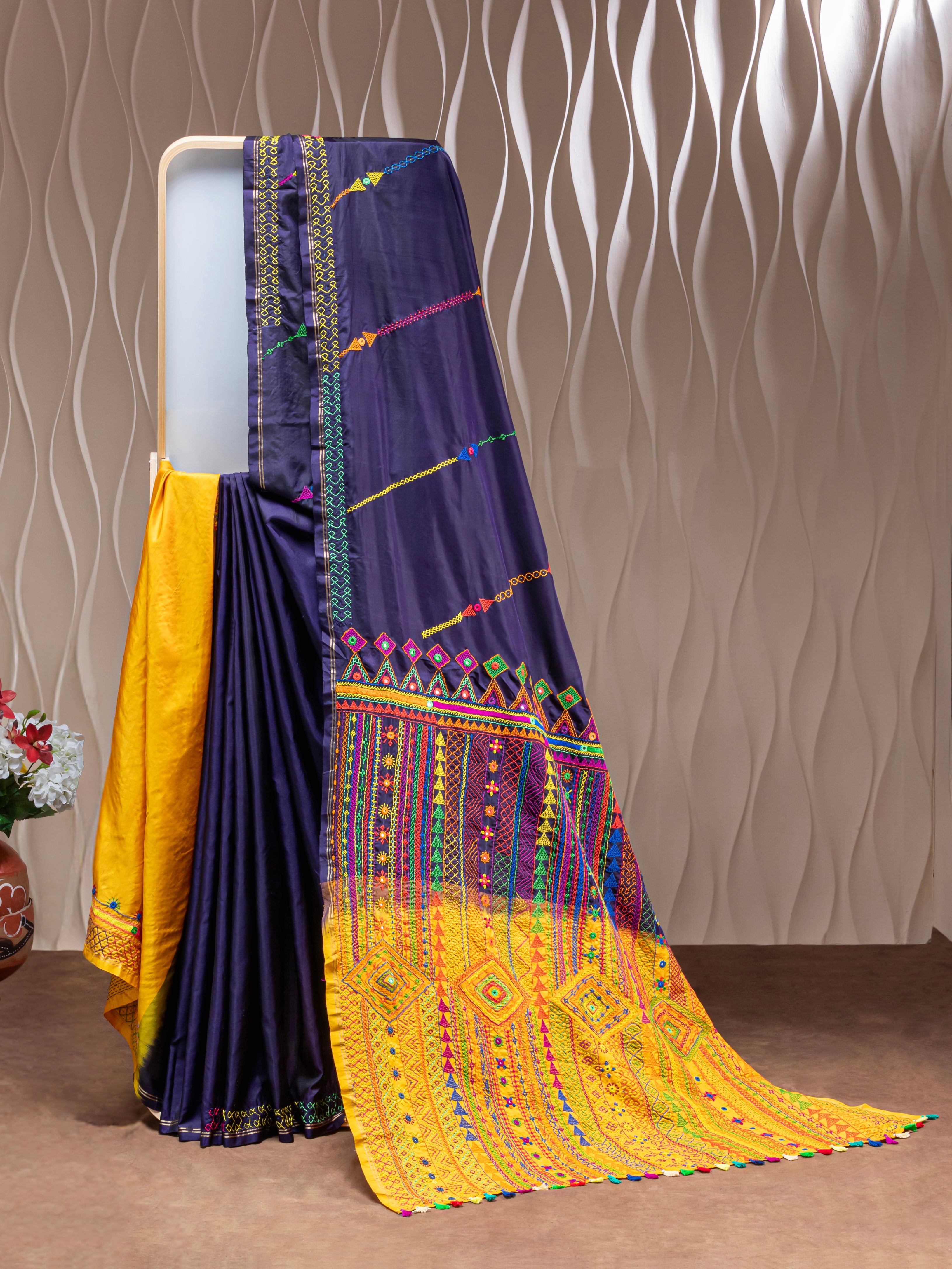
Banarasi Silk Sarees – Timeless Elegance from the Heart of Uttar Pradesh
Banarasi Silk Sarees – Timeless Elegance from the Heart of Uttar Pradesh
Introduction
When one thinks of luxury and grandeur in Indian textiles, Banarasi silk sarees undoubtedly come to mind. Originating from the ancient city of Varanasi (also known as Banaras) in Uttar Pradesh, these sarees are celebrated for their opulent silk fabric, intricate brocade work, and the deep-rooted cultural heritage they represent. Banarasi sarees are more than just garments; they are a symbol of India's rich history and a testament to the skill of the artisans who weave them.
The Origins and History of Banarasi Silk Sarees
Banarasi silk sarees have a history that dates back to the Mughal era. It is believed that the Mughal emperors, with their love for fine art and craftsmanship, invited weavers from Persia to India. These weavers brought with them the art of brocade weaving, which was then integrated with the local weaving techniques in Varanasi, giving birth to the iconic Banarasi silk saree.
Historically, Banarasi sarees were woven exclusively for royalty, with pure gold and silver threads. The intricate designs, often inspired by Mughal art, included motifs like florals, paisleys, and intricate foliate patterns. Over time, these sarees became a symbol of wealth and power, often passed down through generations as family heirlooms.
Craftsmanship and Artisans
The creation of a Banarasi silk saree is a laborious process that can take anywhere from 15 days to six months, depending on the complexity of the design. The process begins with the selection of high-quality silk threads, which are then dyed in vibrant colors. The real magic happens on the loom, where skilled artisans weave the threads together with zari (metallic threads) to create the intricate patterns that Banarasi sarees are known for.
The weavers of Varanasi, who have mastered this craft over generations, play a crucial role in preserving the tradition of Banarasi silk sarees. Each saree is a product of the combined efforts of multiple artisans, each specializing in a different aspect of the weaving process. This meticulous attention to detail ensures that every Banarasi saree is a masterpiece, embodying the legacy of the artisans and their craft.
Place Tags and Cultural Significance
Varanasi, also known as Kashi, is one of the oldest living cities in the world and has been a center of learning, culture, and spirituality for centuries. The city's spiritual aura, combined with its rich history, is woven into every Banarasi saree. The sarees are not just popular in India but have a global appeal, often seen as a symbol of Indian tradition and luxury.
Banarasi silk sarees are an essential part of Indian weddings, especially in the northern regions. The saree is often chosen as the bridal attire due to its rich texture, elegant designs, and the cultural significance attached to it. Wearing a Banarasi saree is seen as a mark of tradition and is often associated with auspicious occasions.
Types of Banarasi Silk Sarees
Banarasi sarees come in various types, each distinguished by its unique weaving technique and design patterns:
-
Katan Silk Banarasi: Made from pure silk, Katan sarees are known for their soft texture and beautiful zari work.
-
Shattir Banarasi: A more affordable option, Shattir sarees are light, easy to drape, and often feature contemporary designs.
-
Organza (Kora) with Zari and Silk: These sarees are sheer and delicate, with intricate designs woven with zari and silk threads.
-
Georgette Banarasi: Made from a lightweight, flowy fabric, Georgette Banarasi sarees are perfect for those who prefer a modern touch to traditional attire.
Why Banarasi Silk Sarees Are Timeless
Banarasi silk sarees have managed to stay relevant through the centuries, thanks to their unparalleled craftsmanship and timeless appeal. Whether it's a wedding, a festive occasion, or a special event, a Banarasi saree is always a fitting choice. The saree's luxurious fabric, combined with its intricate designs, makes it a cherished possession for any woman.
Furthermore, the Banarasi saree industry plays a vital role in supporting the livelihoods of thousands of artisans in Varanasi. By choosing a Banarasi saree, you are not only embracing a piece of India's cultural heritage but also supporting the artisans who dedicate their lives to keeping this tradition alive.
Seasonal Trends and Styling Tips
Banarasi silk sarees can be worn throughout the year, although they are particularly popular during the winter months due to their rich and heavy fabric. For a classic bridal look, opt for a deep red or maroon Banarasi saree with gold zari work. If you prefer a more modern look, lighter shades like pastel pinks, creams, and blues with silver zari work are excellent choices.
Accessorize your Banarasi saree with traditional jewelry like jadau or kundan to enhance the royal appeal. A statement necklace, heavy earrings, and a maang tikka will complete the bridal look. For a contemporary touch, you can drape your saree in a different style, such as the seedha pallu or the lehenga style.
Sustainable Fashion and Supporting Artisans
At Sooji Daara, we are committed to promoting sustainable fashion and supporting the artisans who create these beautiful sarees. Our Banarasi silk sarees are made using eco-friendly dyes and sustainable practices, ensuring that you can enjoy your saree with the knowledge that it was made ethically and responsibly.
Conclusion
Banarasi silk sarees from Uttar Pradesh are a celebration of India's rich textile heritage. Each saree is a work of art, created with skill, passion, and a deep respect for tradition. Whether you are looking for the perfect bridal saree or simply wish to add a touch of elegance to your wardrobe, a Banarasi silk saree is a timeless choice.
Disclaimer: These images are copied from X.com handle @VertigoWarrior and will be removed if there is any copyright infringement.

